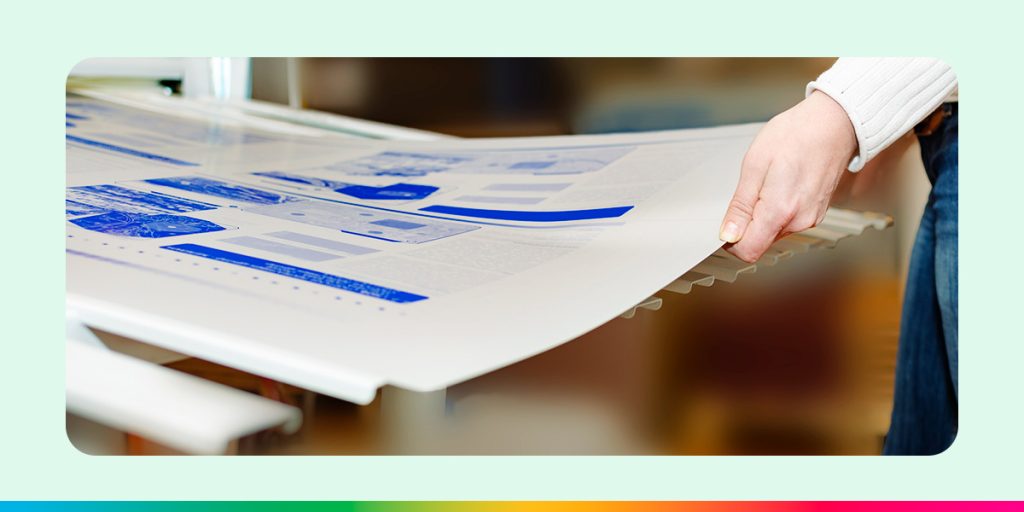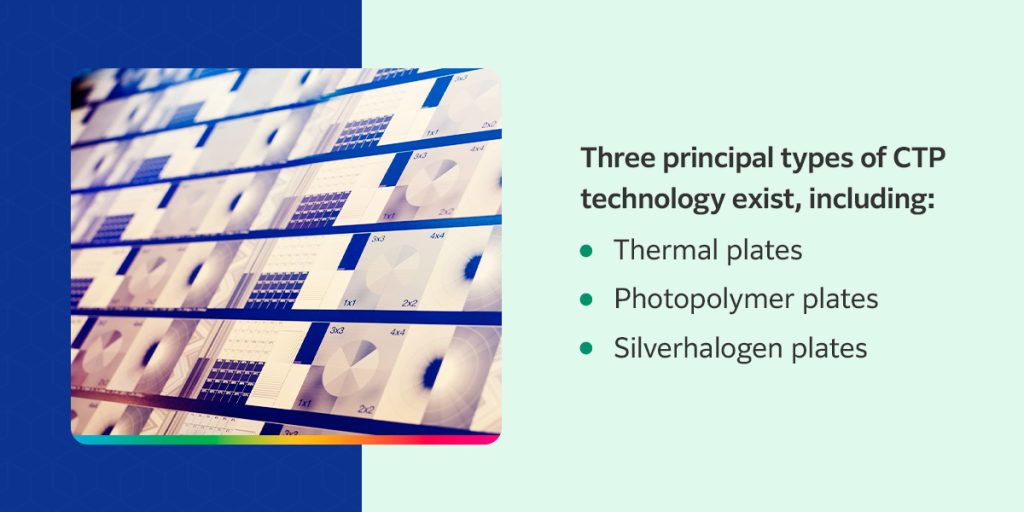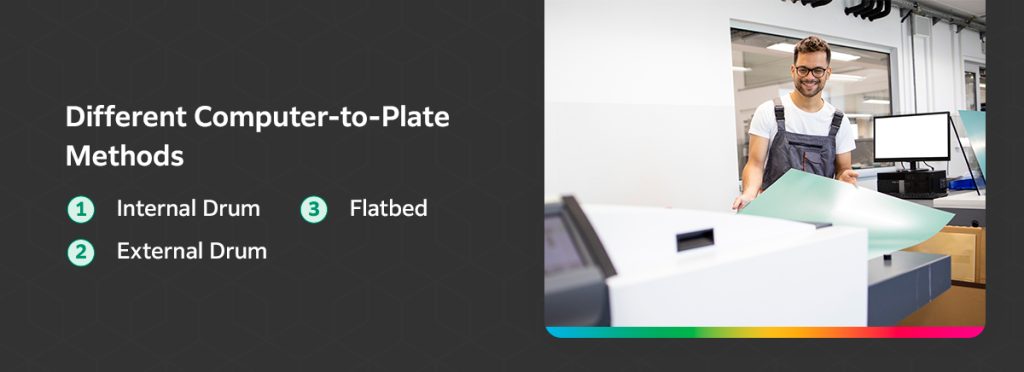
Maintaining a delicate balance between quality and efficiency is essential in the printing industry, and operations managers constantly seek new printing technologies to achieve this goal. The global offset printing industry is expected to reach $6.6 billion by 2030, and CTP plates eliminate excess costs, prevent ink contamination and streamline printing processes.
Computer-to-plate technology generates images in a computer program and outputs them directly onto a printing plate.
With CTP technology, printing is faster, more accurate and more cost-effective, making it a preferred option in the industry for the following applications:

CTP technology varies depending on the type of image setter and the light source you use to expose the printing plate surface. You can use the plate on the press once you’ve imaged the file onto the surface. [CC1] Printing plates are made from several materials depending on the application, including aluminum. The light sources are often ultraviolet lamps and laser diodes.
Legacy CTF processes involve transferring an image onto a photographic film, which requires several toxic chemicals. CTP eliminates this stage, expediting the printing process and creating a safer pressroom environment. Three principal types of CTP technology exist, including:
Several offset CTP systems exist in the market, each with unique features and capabilities to suit different applications. Some popular options to consider include:

With more options, finding the best CTP system can be challenging. CTP models differ depending on the construction of the imagesetter and the light source you use to expose the plates’ surfaces. The most common options include:
In this method, you place the plate inside a drum. At the same time, an imaging head moves along the cylinder’s axis to facilitate the image transmission. A mirror rotates around the axis at the end of the imaging head to beam the required image onto the plate. You can use one laser or several at once. While multiple lasers can increase your speed, one provides consistent light intensity over the plate during imaging.
This method wraps the printing plate around a cylinder, which rotates on its axis. An imaging head moves along the axis and focuses the laser on the surface of the plate. The simple construction of external drum imagesetters allows you to use several image heads simultaneously, decreasing the processing time needed.
As the name suggests, imaging with a flatbed involves reproducing an image onto a flat printing plate. The light source is initially deflected with a rotating polygon mirror. The setup has limitations for larger prints, as you can lose accuracy toward the edges. It’s an excellent option for smaller formats like labels or reproducing lower-quality images.
Flexibility is critical to staying competitive amid changing market demands. Offset CTP printing offers an excellent balance of speed, quality and affordability. CTP technology has come a long way. What was once only available to large-scale printers is now a popular option in the printing industry, making printing more affordable and boosting production productivity.
CTP systems have spearheaded the demand for faster turnaround times and shorter run lengths, and “print on demand” is a common expectation. Making last-minute changes without incurring additional costs is possible. In the digital world, print has significant competition online. The ability to create vivid, detailed images with CTP keeps the industry relevant and ensures a continued demand.
Upgrading a CTP system requires careful evaluation of the benefits. Some of the advantages of making the transition include:
Although offset CTP systems have significant benefits, it also has some disadvantages to consider while upgrading your technology, including:
When you balance the pros and cons, increased image sharpness and streamlined processing are potent motivators, reducing costs and daily management challenges. The benefits of CTP technology make the transition attractive to any printing business looking for fast turnaround times and a quality end product.
Any significant change to your business operations requires careful research and planning. While the transition can benefit your business, you want to see a favorable return as quickly as possible. The following tips can streamline the change and minimize costly mistakes:
CTP prints are durable, but their life span depends on several factors, including the quality of the materials you use, storage conditions and correct handling. One of the main factors to consider is your choice of paper or substrate. Stick to high-quality, acid-free paper and ensure your ink and coating selections suit your intended purpose.
Storage is also critical to print life span. Ensure you store your prints in a stable temperature and humidity, protecting them from excessive light, moisture and contaminants. Following general printing best practices will ensure the finished product reaches your customer in the best possible condition.
Understanding the associated training and maintenance requirements is essential when introducing new technology. Offset CTP technology upgrades should streamline pressroom workflows rather than inhibit them.
Your team must use and maintain the equipment effectively to enjoy the advantages. Focusing on maintenance and training during your transition can maximize the benefits for your team and customers. Dedicate the time to familiarizing yourself with using and maintaining the equipment to reduce downtime and errors in the transition phase. When your team knows how to identify and resolve issues, it empowers them to adopt the new technology.
The maintenance requirements for offset CTP printers may differ depending on the make and model of the machine. Ensure you check the manufacturer’s requirements to implement an effective maintenance program. Some standard maintenance requirements to consider include:
Transitioning to new technology can be challenging, and the best way to combat these challenges is to stay prepared. Investing in comprehensive training programs and ensuring your team feels proficient in using this new technology can accelerate your return, as you’ll experience fewer errors and troubleshooting will be more efficient.
Your ongoing costs are another crucial element of your decision. Budget for:
Understanding your new technology from the outset can extend equipment longevity and reduce the chances of mistakes as your team navigates the CTP system.
The digital age provoked significant changes in the printing industry. Yet, offset printing continues to adapt to consumer demand, integrating with digital technologies to reduce waste, streamlining process efficiency and producing high-quality images. Transitioning to offset CTP technology is the next logical step for many printing businesses. What better way to make the transition than being backed with the reliability of Fujifilm?
Find the technology you need with our extensive product portfolio. Let us work with you to integrate the latest technology into your existing workflow. Whether you’re a commercial printer, art studio, newspaper publisher or service bureau, we create solutions that address your specific industry needs. Contact us to learn more about offset CTP technology, or order your supplies online today.